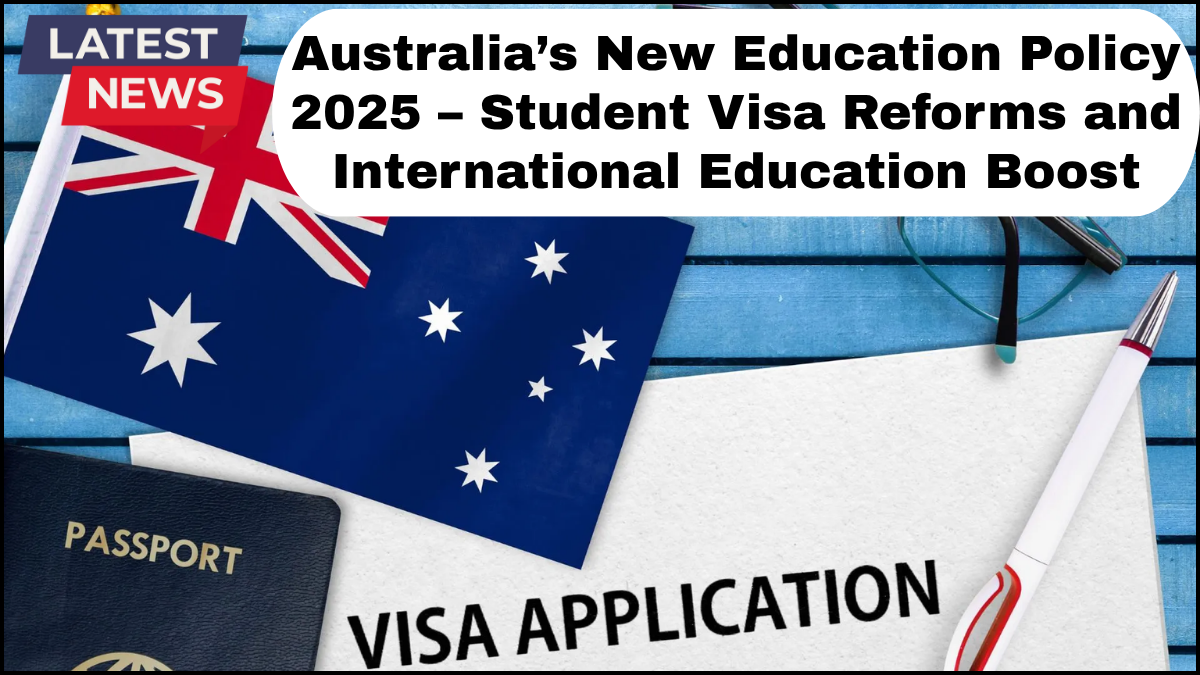Australia has long been a top destination for international students seeking world-class education and a multicultural learning environment. With the unveiling of its New Education Policy 2025, the Australian government is taking bold steps to reshape the landscape of global education through sweeping international student reforms and a fresh focus on long-term growth in the education sector. These changes aim to strike a balance between economic growth, academic integrity, and national interest, all while making Australia more attractive and competitive in the global education market.

A Strategic Overhaul of Australia’s Education Framework
The 2025 Education Policy represents more than just administrative tweaks; it marks a strategic shift. The reforms are designed to enhance the quality of international education, protect student welfare, and uphold the integrity of the student visa system. The policy is grounded in three core pillars:
-
Raising Standards for Education Providers
-
Improving the Student Experience
-
Streamlining and Securing Visa Pathways
By elevating academic and operational benchmarks for educational institutions, Australia intends to weed out low-quality providers and ensure that international students receive the high-caliber education they are promised.
Major Student Visa Reforms in 2025
A cornerstone of the new policy is the overhaul of visa rules for foreign students in 2025. These changes reflect a targeted approach to immigration control and labor market alignment.
Key Visa Changes Include:
-
Increased English Language Requirements:
The minimum English proficiency standards have been raised to ensure students can succeed academically and integrate socially. IELTS score thresholds and comparable tests are now more stringent for certain courses and programs. -
Revised Genuine Student Test:
The Genuine Temporary Entrant (GTE) criteria have been restructured into a clearer “Genuine Student Test.” This test focuses on applicants’ intent to study, their financial capacity, and post-study plans, reducing loopholes previously exploited for non-study migration. -
Work Restrictions Adjusted:
International students will face tighter rules on working hours during semesters—now capped again at 24 hours per week—to prioritize academic commitments while still allowing reasonable part-time work options. -
Streamlined Visa Processing for High-Performing Institutions:
Students enrolling in institutions with strong compliance records will benefit from faster visa processing. This rewards quality providers and reduces bureaucratic bottlenecks.
Reinforcing Australia’s Global Standing in Education
The government has also rolled out measures to boost Australia’s international education appeal in an increasingly competitive global market.
-
Diversifying Student Source Countries:
The policy aims to move beyond dependence on a few countries like India and China. Targeted engagement in Southeast Asia, Latin America, and Africa will broaden the student base and reduce risk. -
Enhanced Post-Study Work Rights for High-Skill Sectors:
Students in areas of national skill shortage—such as health care, engineering, and IT—can access longer post-study work rights, incentivizing the best talent to stay and contribute to the economy. -
Investment in Student Welfare and Housing:
Recognizing the challenges of student housing and mental health, the government is allocating funds for new accommodation projects and expanded support services, especially in regional Australia. -
Support for Regional Institutions:
The policy encourages students to consider institutions outside major cities by offering additional visa points and regional work incentives, thereby distributing the benefits of international education more evenly across the country.
Industry and Institutional Response
Universities and education providers have broadly welcomed the policy, especially its focus on quality assurance and sustainability. However, there are concerns about how smaller colleges will adapt to the higher compliance costs. The government has promised transition support and a review mechanism to monitor impact.
Employers in high-demand sectors have praised the alignment of education and immigration, noting that the reforms will help bridge workforce gaps without compromising system integrity.
FAQs: Australia International Student Reforms
Q1: When do the new student visa rules come into effect?
The reforms outlined in the 2025 Education Policy are being implemented in phases, with major visa changes starting from January 2025.
Q2: How will the Genuine Student Test differ from the previous GTE requirement?
The new test places greater emphasis on an applicant’s academic preparedness, financial stability, and genuine study intent, with clearer criteria and less subjectivity.
Q3: Are there any benefits for studying in regional Australia?
Yes. Students studying in regional areas may receive bonus points for future visas and enjoy extended post-study work rights.
Q4: What happens if a student doesn’t meet the new English language requirements?
They may be required to complete additional preparatory language courses or will need to retake standardized tests before visa approval.
Q5: Which industries are considered high-skill sectors for extended post-study work rights?
Fields like health care, information technology, education, and engineering qualify under the updated post-study work visa extensions.
click here to learn more